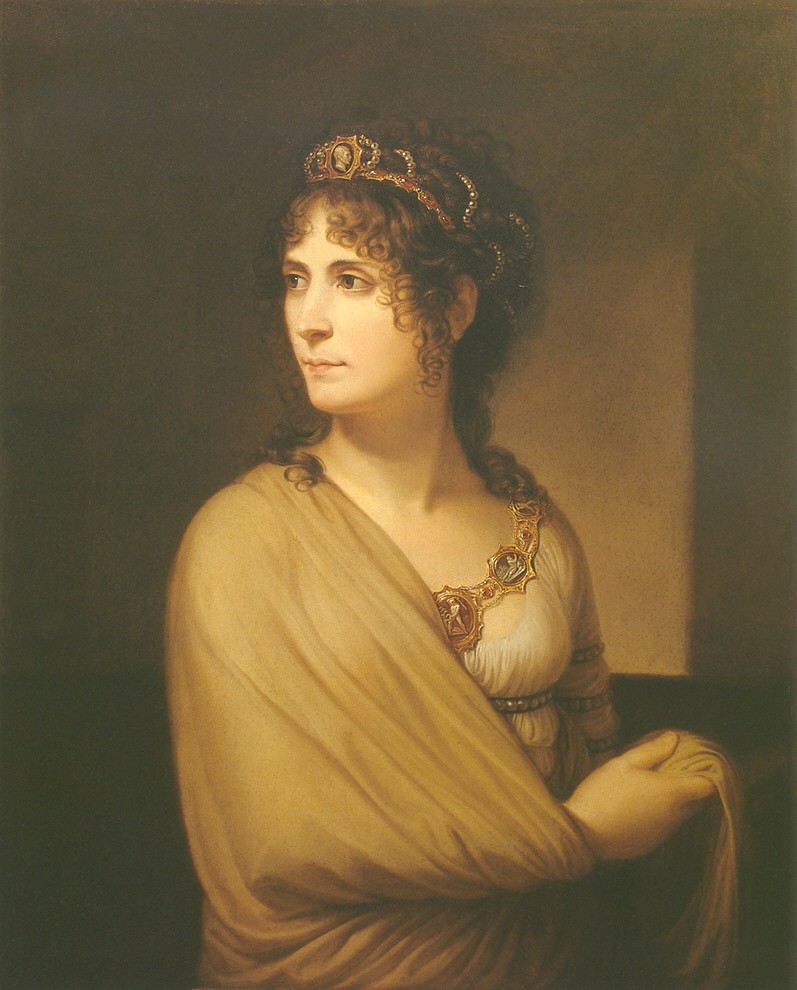© Unofficial Royalty 2024

Lady Margaret Beaufort; Credit – Wikipedia
May 31, 1246 – Death of Isabella of Angouleme, Queen of England, second wife of King John of England, at Fontevrault Abbey in Maine-et-Loire, France; buried at Fontevrault Abbey
After the death of King John, Isabella, who was Duchess of Angoulême in her own right, returned to France to assume control of her inheritance, the County of Angoulême. There, she once again met her former fiancé Hugh de Lusignan, now the 10th Count of La Marche. He had never married, and previously a betrothal between him and Isabella’s 10-year-old daughter Joan had been arranged. Upon seeing Isabella once again, he decided that he preferred Joan’s still beautiful mother. Isabella and Hugh married and they had nine children.
Unofficial Royalty: Isabella of Angouleme, Queen of England
May 31, 1443 – Birth of Lady Margaret Beaufort, mother of King Henry VII of England, at Bletsoe Castle in Bedfordshire, England
Margaret was a great-granddaughter of John of Gaunt, son of King Edward III. She was 13 years old when her only child, the future King Henry VII, was born. It was through Margaret that her son had his tenuous connection to the House of Lancaster. She lived long enough to see her grandson succeed to the English throne as King Henry VIII.
Unofficial Royalty: Lady Margaret Beaufort
May 31, 1495 – Death of Cecily Neville, Duchess of York, mother of King Edward IV and King Richard III of England, at Berkhamsted Castle in Hertfordshire, England; buried at St Mary and All Saints Church in Fotheringhay, England
A great-granddaughter of King Edward III of England, Cecily Neville was the wife of Richard Plantagenet, 3rd Duke of York, also a great-grandchild of King Edward III, who was a claimant to the English throne and the leader of the Yorkist faction during the Wars of the Roses. She was also the mother of King Edward IV of England and King Richard III of England, the grandmother of the ill-fated King Edward V of England, and the great-grandmother of King Henry VIII of England. Cecily outlived all but two of her twelve children. She was alive when her granddaughter Elizabeth of York, daughter of King Edward IV, married Henry Tudor who had defeated her son King Richard III at the Battle of Bosworth Field in 1485 and then succeeded to the English throne by right of conquest as King Henry VII, the first Tudor monarch. Cecily was alive when her granddaughter Elizabeth of York gave birth to her first three children, Cecily’s great-grandchildren Arthur, Prince of Wales, Margaret Tudor, and King Henry VIII. Through Margaret Tudor, who married James IV, King of Scots, Cecily is an ancestor of the British royal family and many other European royal families.
Unofficial Royalty: Cecily Neville, Duchess of York
May 31, 1740 – Death of King Friedrich Wilhelm I of Prussia, in Berlin, Kingdom of Prussia, now in the German state of Brandenburg; buried at Church of Peace at Sanssouci in Potsdam, Kingdom of Prussia, now in Brandenburg, Germany
Friedrich Wilhelm I was first interred at the Garrison Church in Potsdam. During World War I, his coffin was moved for safekeeping, first to Berlin and then to a salt mine near Berterode. After being recovered by American forces, he was re-interred at St. Elisabeth’s Church in Marburg, Germany in 1946. His coffin was moved again in 1953 to Hohenzollern Castle, and in 1991 his coffin was placed on the steps of the altar in the Kaiser Friedrich Mausoleum at the Church of Peace in Sanssouci Park in Potsdam, Germany.
Unofficial Royalty: King Friedrich Wilhelm I of Prussia
May 31, 1785 – Birth of Heinrich LXII, 2nd Prince Reuss of Gera in Schleiz, County of Reuss-Schleiz, later in the Principality of Reuss-Gera, now in Thuringia, Germany
Heinrich LXII also did much to beautify Reuss-Gera, especially along the roads leading to Schleiz. In 1837, Schleiz Castle was badly damaged in a fire and Heinrich LXII oversaw the renovations. However, in 1945, Schleiz Castle was destroyed by American bombing during World War II. The ruins were removed in 1950, leaving only the two damaged towers.
Unofficial Royalty: Heinrich LXII, 2nd Prince Reuss of Gera
May 31, 1867 – Birth of Maria Josepha of Saxony, Archduchess of Austria, mother of Karl I, the last Emperor of Austria, in Dresden, Kingdom of Saxony, now in the German state of Saxony
Unofficial Royalty: Maria Josepha of Saxony, Archduchess of Austria (article coming soon)
May 31, 1906 – Wedding of King Alfonso XIII of Spain and Victoria Eugenie of Battenberg at San Jerónimo el Real in Madrid, Spain
In 1905, Ena met her future husband, King Alfonso XIII of Spain, while he was on a State Visit to the United Kingdom. The two soon began corresponding and quickly became smitten with each other. However, several issues needed to be resolved before they could consider marriage. First was the looming threat of hemophilia. Ena’s brother Leopold was suffering from the disease, so there was a very good chance that she might bring it to the Spanish royal family. However, with little known about the disease at the time, Alfonso did not seem to be too concerned. The bigger obstacles were Ena’s religion and (as far as Alfonso’s mother was concerned), less than royal bloodline. However, Ena willingly agreed to convert to Catholicism, and her uncle, King Edward VII, elevated her rank to Royal Highness so there could be no question of an unequal marriage. These seem to have appeased the Dowager Queen and the engagement was announced. The couple married on May 31, 1906, at the Royal Monastery of San Jerónimo in Madrid, in a wedding attended by many royals from around the world. The marriage was not, however, without incident. While the wedding procession was returning to the Royal Palace, an assassination attempt was made on the King and his new Queen. Both Alfonso and Ena were unharmed, however, several guards and bystanders were killed or injured.
Unofficial Royalty: Wedding of Alfonso XIII of Spain and Victoria Eugenie of Battenberg
May 31, 1923 – Birth of Rainier III, Prince of Monaco in Monaco
Full name: Rainier Louis Henri Maxence Bertrand
Rainier was the second child, and only son, of Princess Charlotte of Monaco, the illegitimate and adopted daughter of Prince Louis II of Monaco, and Count Pierre de Polignac. In May 1944, he became the heir-presumptive to his grandfather, Prince Louis II, following his mother’s renunciation of her succession rights in his favor. Rainier became Prince of Monaco in 1949 upon the death of his grandfather. In 1956, Rainier married American film star Grace Kelly and they had three children. In 1982, Rainier’s wife Grace died following a car accident. By 2000, Rainier’s health was declining. In January 2005, he made one of his last public appearances, at the International Circus Festival of Monte-Carlo. After several weeks in the hospital, Prince Rainier III passed away at 81 years old. He was succeeded by his son, Prince Albert II, who had been serving as Regent since the prior week. His funeral was held on April 15 at the Saint Nicholas Cathedral, and he was buried beside his late wife, Princess Grace.
Unofficial Royalty: Prince Rainier III of Monaco
This article is the intellectual property of Unofficial Royalty and is NOT TO BE COPIED, EDITED, OR POSTED IN ANY FORM ON ANOTHER WEBSITE under any circumstances. It is permissible to use a link that directs to Unofficial Royalty.











